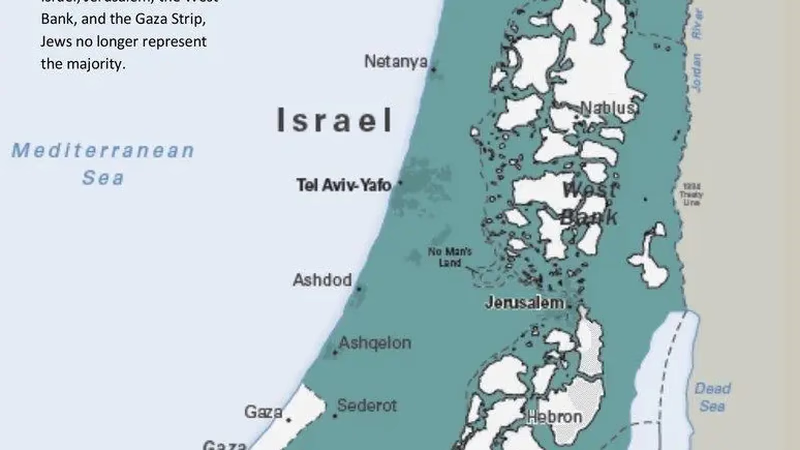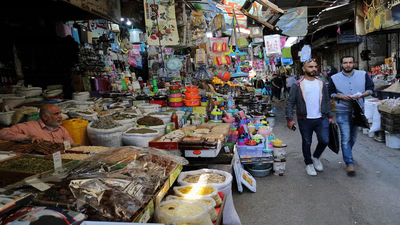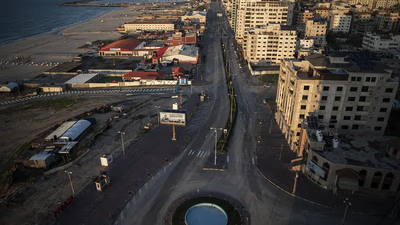
Historical trade routes in Palestine highlight cultural exchanges.
The land that encompasses present-day Palestine has been home to numerous ancient civilizations. These include the Canaanites, Philistines, Israelites, Assyrians, Babylonians, Persians, Greeks, Romans, and Byzantines. The region was an important crossroads for trade and cultural exchange. In the 7th century, Arab Muslim armies conquered the region and brought Islam to the area. Over time, Palestine became part of various Islamic empires, including the Umayyads, Abbasids, Fatimids, Ayyubids, and Mamluks. Throughout this period, the population of Palestine included Muslims, Christians, and Jews.
In the 16th century, the Ottoman Empire, led by the Turks, gained control over Palestine and ruled the region for about four centuries. During this time, the demographics and political landscape of the region continued to evolve. At the end of World War I, the Ottoman Empire collapsed, and the League of Nations granted Britain a mandate over Palestine. The Balfour Declaration of 1917, issued by the British government, expressed support for the establishment of a \"national home for the Jewish people\" in Palestine. This declaration had significant implications for the future of the region.
The late 19th and early 20th centuries saw the rise of the Zionist movement, which advocated for the establishment of a Jewish homeland in Palestine. Jewish immigration to Palestine increased, and Jewish communities grew, leading to tensions with the Arab population. The Arab population, concerned about the growing Jewish presence and the potential displacement of Palestinians, began expressing opposition to Jewish immigration and land purchases. Tensions between the Jewish and Arab communities escalated, leading to sporadic violence and clashes.
On November 29, 1947, the UN General Assembly, by a two-thirds majority vote, approved the United Nations General Assembly resolution (Resolution 181 of the UN General Assembly), which seeks to end the Arab-Israeli conflict. The Arab-Jewish Conflict was intended to divide the land of Palestine into Jewish and Arab states, and to control most of Jerusalem, which included Bethlehem, by international forces.
Jewish leaders (including the Jewish Agency) accepted the plan, but Palestinian Arab leaders rejected it and refused to negotiate. Neighboring Arab and Muslim countries also opposed the partition plan. After the Arab High Committee declared a riot in Jerusalem in 1947, the Arab community reacted violently and clashed, resulting in the burning of many buildings and shops. As military conflicts between Palestinian and Jewish militias continued in Palestine, British rule over Palestine ended on May 15, 1948, the day before the founding of the State of Israel had been announced (see The Establishment of the State of Israel).
Arab neighbors and their armies (Lebanon, Syria, Iraq, Egypt, Jordan, Jihad Army, Arab Liberation Army, and local Arabs) invaded the country shortly after Israel declared independence, followed by the 1948 Arab-Israeli war. As a result, the plan to divide Palestine never materialized. Since the 1960s, the term \"Palestine\" has been used interchangeably in political contexts. Various declarations, such as the declaration of an independent Palestinian state in 1988 by the Palestine Liberation Organization, referred to a country called Palestine, and defined its borders with varying degrees of clarity, including calling for the annexation of the whole of Israel to Palestine.
Most recently, a draft of the Palestinian constitution based on the West Bank and Gaza Strip defined the borders of Palestine before 1967 (the Six-Day War). This Green Line (Israel) is designated by the 1949 Interim Firefighting Agreement, and negotiations on defining permanent boundaries have not yet taken place. In addition, since 1994, the Palestinian Authority has taken control of various parts of ancient Palestine.
In 1947, the United Nations proposed a partition plan for Palestine, recommending the establishment of separate Jewish and Arab states, with Jerusalem placed under international administration. The Jewish community accepted the plan, but the Arab states rejected it, leading to the outbreak of the 1948 Arab-Israeli War. Israel declared independence on May 14, 1948, following the withdrawal of British forces. The Arab-Israeli War resulted in the displacement of a significant number of Palestinians, with many fleeing or being expelled from their homes. This event, known as the Nakba (Catastrophe), remains a deeply contentious issue.
Following the war, Israel expanded its territory beyond the boundaries set by the UN partition plan, occupying additional areas that were intended for the Arab state. The Gaza Strip came under Egyptian control, and the West Bank was administered by Jordan. In 1967, Israel fought the Six-Day War against neighboring Arab countries and occupied the Gaza Strip, the West Bank, including East Jerusalem, and the Golan Heights. This occupation continues to be a major point of contention in the Israeli-Palestinian conflict.
Since the 1990s, various peace negotiations have taken place between Israel and the Palestinians, seeking to establish a two-state solution. The Oslo Accords of 1993 led to the creation of the Palestinian Authority, which governs parts of the West Bank. Present-day Palestine refers to the West Bank, including East Jerusalem, and the Gaza Strip. The status and future of this territory remain unresolved, with ongoing conflicts, disputes over borders, and differing visions of statehood.
-

Palestine, with over 4. 2 million residents in the West Bank and 1. 2 million in the Gaza Strip, faces significant economic challenges due to ongoing occupation. The gross domestic product (GDP) of Palestine is approximately $8 billion, ranking it 157th globally, with a growth rate of about 6%. However, this growth is largely driven by the West Bank, while the Gaza Strip"s economy has suffered considerably. The industrial sector in Gaza primarily consists of family-run businesses producing textiles and crafts. Economic output in Gaza declined sharply between 1992 and 1996 due to border closures imposed by Israel, which disrupted established trade relations and led to rising unemployment. Although there was a brief recovery from 1998 until the onset of the Al-Aqsa Intifada in late 2000, subsequent military actions and restrictions severely hampered trade and labor movements.
By 2001, GDP per capita plummeted by 35%, with around 60% of Gaza"s population living below the poverty line. The political landscape further complicates economic recovery efforts as restrictions on work permits for Palestinian workers persist.
-

Palestine"s economy is heavily reliant on international financial aid, which supports the Palestinian Authority and public services. Despite political restrictions impacting trade, Palestine exports agricultural products and crafts to regional markets. The economy faces significant challenges, including Israeli trade restrictions, recurrent hostilities, and internal political divides. Following the 2006 elections, financial aid from international donors has been crucial, with the U. S. and EU providing substantial support. However, economic pressures have led to rising tensions between political factions like Hamas and Fatah. The Palestinian Authority"s budget is largely dependent on external funding, with a notable deficit exacerbated by high government spending.
The GDP growth rate has fluctuated over recent years, reflecting ongoing economic instability due to occupation-related limitations. As of 2023, economic growth is expected to soften further.
-

The history of present-day Palestine is marked by a rich tapestry of civilizations, including Canaanites, Philistines, and various Islamic empires. The region became a significant trade crossroads, especially after the Arab Muslim conquest in the 7th century. The Ottoman Empire controlled Palestine for four centuries until its collapse post-World War I, leading to British mandate and the controversial Balfour Declaration of 1917. This declaration supported a Jewish homeland in Palestine, igniting tensions between Jewish immigrants and the Arab population. The UN"s 1947 partition plan aimed to resolve these tensions by creating separate Jewish and Arab states but was rejected by Arab leaders, leading to the 1948 Arab-Israeli War and significant displacement of Palestinians known as Nakba. Following Israel"s declaration of independence, territorial disputes intensified as Israel expanded beyond UN-designated borders. The Gaza Strip fell under Egyptian control while Jordan administered the West Bank. The Six-Day War in 1967 further complicated matters with Israeli occupation of these territories.
Since then, various peace efforts have sought a two-state solution, yet conflicts persist over borders and statehood aspirations. Present-day Palestine encompasses the West Bank and Gaza Strip, with its future status remaining uncertain amidst ongoing disputes.
-

Gaza, part of the Palestinian territories, primarily connects to the outside world through the Rafah Border Crossing with Egypt. Travelers should remain informed about the evolving political and security landscape, as conditions can change rapidly. Coordination with local authorities, such as the Palestinian Authority or United Nations agencies, is essential for guidance on travel routes and necessary documentation. Freight transport in Gaza is predominantly road-based and privatized, with a significant number of older vehicles in operation. The international trade for Palestinian areas has historically relied on Israeli seaports like Haifa and Ashdod, facing delays due to security checks. Plans for a Gaza Seaport have been hindered by Israeli opposition but include provisions for managing operations and security through a joint protocol. The Erez Border Crossing offers access to Israel and the West Bank but is subject to strict regulations. Alternatively, travelers can exit Gaza through Rafah into Egypt and then proceed to the West Bank via Jordan, which may involve various transportation methods.
-

Citrus fruits, strawberries, and flowers are key exports from the Gaza Strip, alongside olives, vegetables, meat, and dairy products. The region faces significant trade challenges due to ongoing sieges by Israel and Egypt, which restrict movement and access to essential goods. Imports primarily consist of food, consumer goods, and construction materials. The political landscape has shifted since the 2005 Israeli withdrawal, with Hamas gaining control in 2007. This has complicated trade relations further as Israel maintains control over Gaza"s airspace and waters. Environmental issues such as desertification and water resource management also impact agricultural productivity. Despite these challenges, Gaza"s temperate climate supports its agricultural sector. The region"s historical significance as part of the "cradle of humanity" adds to its cultural value but does not alleviate current economic hardships.
Efforts to reopen Yasser Arafat International Airport have stalled due to ongoing negotiations between Palestinian authorities and Israeli officials. "





